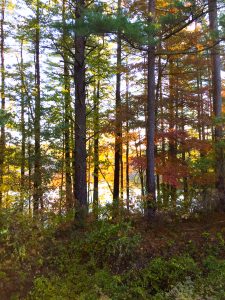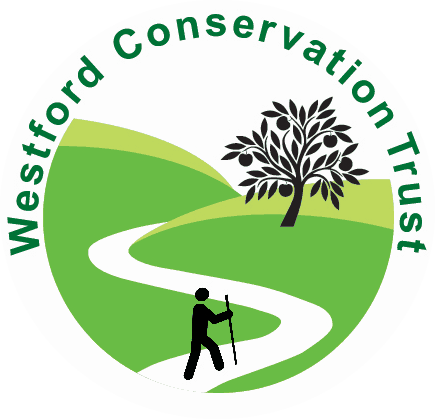
New England’s greatest treasure is its forests. We rely on our forests to cool the land, and provide moisture to our air. And in this era of abrupt, serious climate change, trees are a major route for carbon sequestration. The more trees that are cut, the more global warming will occur. Forests provide sanctuary for most birds and mammals; and a walk in the forest is our best therapy. Of course we also use trees for lumber to build our houses. Is there a way to use trees as a resource and still save our climate? We must find a way.
In a fascinating new book entitled A Forest Journey, author John Perlin makes the point that the downfall of the world’s great civilizations was the result of the massive cutting down of trees. Perlin has meticulously researched the downfall of Mesopotamia, Ancient China, India, Crete, Greece, Rome, Africa, the Muslim Mediterranean countries, Italy and England. He traces their losses to their voracious appetite for wood: for burning for heat and for the smelting of metals, building of cities, for trade and commerce, and especially for the building of ships for war-making. Countries who had used up their own forests made war by sea on nearby countries in order to gain access to more wood. Clear-cut land us hot and dry, providing no moisture to the air, and causing drought. Civilizations which have put themselves in this position of severe, ongoing drought, have to move, take over other’s lands, or perish.
New England has not been spared. Perlin states, “The land of New England and its native inhabitants–animals and people alike–suffered as the timber industry flourished in the 1600’s….As colonists cleared the land…small streams dried up and rivers decreased in volume.” A native Mohawk delegation speaking to the king’s representative, begged him to put a stop to the deforestation. “Otherwise we must be ruined.” (Perlin, pg. 361)
Perlin points to a 1990 article in Science Magazine which concludes that the planting of trees after clear cuts, cannot make up for the damage to the environment: “the critical factor is the amount of CO2 stored in the forest, not the rate of carbon uptake.” (Perlin, pg. 492) Logging dramatically reduces the carbon dioxide sequestration capability of the forest. Researchers find that even after 100 years, the “new” planted forest only sequesters 50% of the carbon that the old growth forest would have done. And, Perlin states, “Forests do more to keep the Earth temperate than removing carbon dioxide from the atmosphere. Like fans, treetops cause the air surrounding them to circulate to moderate temperatures in their vicinity. The leaves of trees also emit great amounts of water into the atmosphere, which, in the process of changing into vapor, absorbs heat, cooling the surrounding air…and the surrounding land.” (Perlin, pg. 496)
We must all work to limit tree cutting in our communities. Old trees are not successfully replaced by young trees. We have, so far, been spared the brutal droughts and fires of the western states. Our trees have saved us. Let’s save them.
Many thanks to all flora and fauna reporters for the month of August. Please send reports by September 30 for next month’s column. You can e-mail reports to me at mariancharman@gmail.com.
————————-
August 2023 Reports:
Marian/Bill Harman, Old Colony Dr. August 1, low 70’s, sunny, low humidity—lovely! August 5, 85, sunny. A walk on the beaver dam trail: Three hawks kittling very high—flap, flap, glide—Accipiters? Juvenile red-tailed hawk calling from a pine. August 6, low 80’s, sunny. I was using a red cloth to clean outside a window. A juvenile hummingbird came right over to look at it. August 7, 72 degrees, rainy. At feeder: red-bellied woodpecker, six jays, mostly juveniles. Two hummingbirds chasing ach other away from the feeder, many grackles, titmouse, white-breasted nuthatch, four goldfinches—brilliant males. August 8, 70’s, humid, rainy. Female rose-breasted grosbeak at feeder. What has happened to Charlotte the spider? Her egg case has come all unraveled. I suspect the small spider that keeps coming over. The two spiders are locked together now. One may be eating the other. There are juvenile goldfinches at the feeder now, trying to ask for seeds from adults while on the thistle feeder. Older ones keep bumping the juveniles off. Later in the day: it looks like Charlotte has eaten the smaller spider, and then molted her exoskeleton. August 11, the juvenile hummingbird is perched and sunning herself on the metal fence on our deck. August 16, juvenile female hummingbird is often perched on our metal fence surrounding the deck. She is tame, innocent, and flies over to check out my red coffee mug. August 19, 70 degrees, low humidity, part sun—a lovely day. At feeder: two male house finches, two hummingbirds, five our six goldfinches, two starlings, flicker heard, three blue jays, one dove. A walk to the beaver dam: even with the light wind, lots of mosquitos found me. Heard: juvenile hawk calling, Carolina wren, blue jays, grackles, cardinals, chickadee. Lots of fungi: orange-red, pink-red, white tan, also orange jellies on rotting logs, tan coral fungi. August 25, Charlotte spider is so brave and persistent. She has produced another egg sac and she watches over it carefully, keeping one leg on it most of the time. August 27, Frances Hill Wildlife Sanctuary: Pileated woodpeckers, white wood aster blooming, maple-leaved viburnum has berries turning black. August 29, Oh no! I’m not sure, but Charlotte’s egg sac seems to be unraveling again.
Rosemarie Koester, Providence Rd. August 19, neighbors report a bear in the neighborhood. At the feeder: downy and red-bellied woodpeckers, lots of goldfinches– some on the catmint. Chickadees, blue jays, cardinals, robin, juvenile hawk crying, hawk overhead, lots of rabbits, lots of mosquitoes, squirrels, chipmunks, lots of bees and wasps at our large white hydrangea. Nothing on our milkweeds. Goldenrods, purple loosestrife blooming on Tadmuck Rd.
Bob Murphy at Stoneridge Rd. Bob sent a photo from last winter of a bobcat walking in the snow—beautiful! [MH]
Marian Harman is a member of the Westford Conservation Trust, a non-profit conservation organization, whose mission is the preservation of Westford’s open spaces and trails. The Trust welcomes new members and volunteers. Check out our website at westfordconservationtrust.org and visit us on Facebook.
